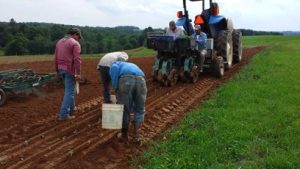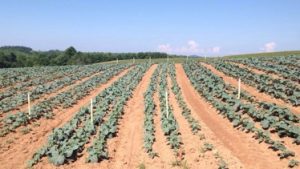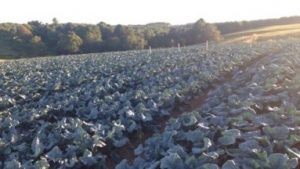Significant changes in elevation occur over relatively short distances in Southwest Virginia, where the Blue Ridge and Appalachian Mountains are prominent features of the skyline. The climate is mild enough to allow both spring and fall broccoli crops, but summer heat and humidity are problematic.
Most agricultural production in this region happens on small to mid-size farms. The significant changes in elevation that occur over relatively short distances allow for extended production seasons, with growers in lower elevation regions able to harvest broccoli about three and a half weeks earlier in the spring than growers at elevations 1200 feet higher. With better cultivars, the seasons could be extended even further.
Agricultural consultant Wythe Morris, who retired from Virginia Tech Extension several years ago to focus on food safety training, worked with new Commercial Horticulture Extension Agent Ashley Edwards on the 2017 Virginia Yield trial, which was transplanted in June and evaluated in August.
Following the grower’s practice, the trial was planted on bare ground, with broccoli transplanted in three rows on flat (not raised) beds on 72-inch centers. Between-row spacing on beds was 18 inches and with-in row spacing was 12 inches. The beds comprise the area between tires on a tractor. A 36-inch wide space between beds accommodates the tractor tires, as shown in the first photo below. The remaining photos show the broccoli plots shortly after plots were staked and again closer to harvest. (Click on photos to see a larger image.)



